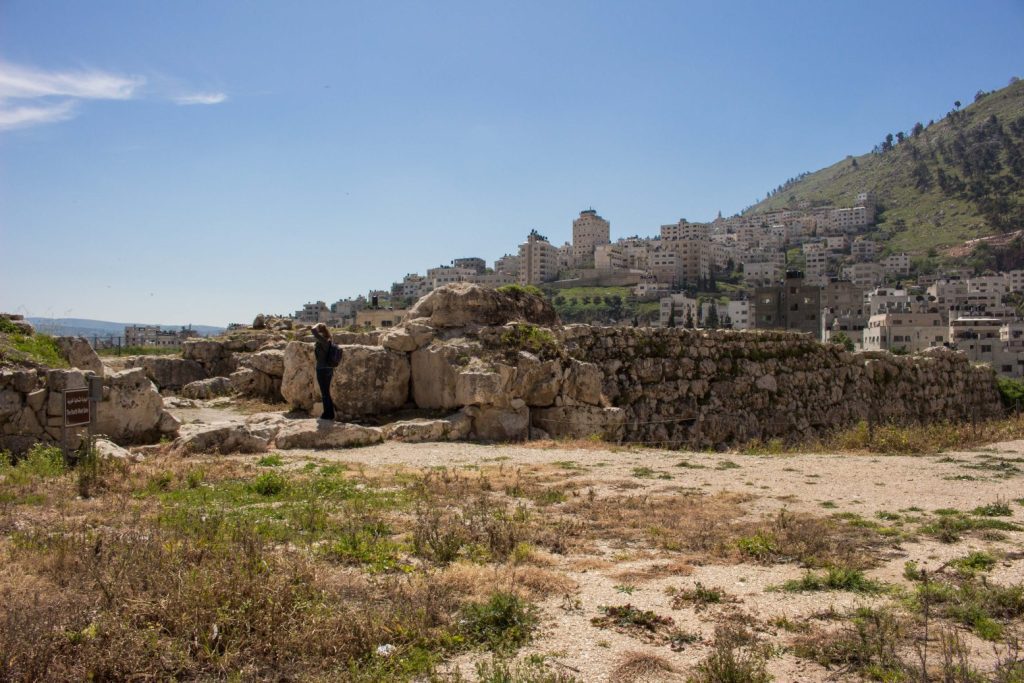Let’s take a journey to the Palestinian West Bank to visit Tell Balata, an ancient city with thousands of years of history, culture, and religious significance just waiting for you to explore. Located in the mountain pass between Mount Gerizim and Mount Ebal, this ancient city is thought to be one and the same as Shechem. UNESCO lists this site as a part of the Inventory of Cultural and Natural Heritage Sites of Potential Outstanding Universal Value in the Palestinian Territories.
By visiting Tell Balata, you will have the opportunity to explore these extensive ruins and dive into the fascinating history of those who lived there for thousands of years. I highly suggest that you take a private tour when visiting Tell Balata so that you can truly embrace the history; culture, and religious significance of this ancient city while getting to experience all that this archaeological site has to offer.
Tell Balata the Location of Ancient Shechem
One of the reasons why Tell Balata is considered such a vital archeological location is because it has been identified as one of Shechem’s possible locations. In the 19th and 20th centuries, archaeological excavations became ever more frequent as the drive to identify religious sites increased, especially as more pilgrims could travel to such places to worship.
The first excavation of Tell Balata occurred in 1913 by a German scholar, Ernst Sellin. A successful dig led to further excavations of the site in the following decades. What they found included house structures, water channels, and the items used in everyday living such as pottery. The earliest remains of the site date back to 3500-3000 BCE! Can you even imagine? The next question you are likely asking is, “Why was Shechem important?”
Shechem was a Canaanite city dating back 4000 years. It was first mentioned in the Ebla tablets found at Tell Mardikh. It was considered a commercial city and was a central location for trading. Next, it was listed in the Amarna Letters; described as the center of the Labaya kingdom, run by a Canaanite warlord who recruited mercenaries. It was also mentioned in the Hebrew Bible, where it was named the first capital of the Kingdom of Israel. It is believed that when Abraham came to Shechem he offered a sacrifice and built an altar to God. Shechem was considered better than all other cities in the land of Israel. With Jacob’s Well and Joseph’s tomb so close to the now Tell Balata, this location could actually be the ancient Shechem.
Ancient Shechem and the Hebrew Bible
Shechem (Tell Balata) is first mentioned in the Bible in the book of Genesis as the first place that Abraham came to in the land of Canaan, and was then called “Elon Moreh”. When Jacob returned to the land of Canaan from Haran; where he fled after stealing the blessings, he arrived at Shechem. At that time the city was called Shalem, and the people of the land of Canaan dwelt in it (the Hivites). He purchased a plot of land from the sons of Hamor; the father of Shechem, for 100 coins and erected an altar to offer sacrifices.
Shechem, son of Hamor kidnapped Jacob’s daughter, Dina, and raped her. Following this, Dina’s two brothers, Shimon and Levi; avenged their sister by killing all the men in the city; and taking the women and children captive. Before Jacob left Shechem (Tell Balata) to Beit El; he collected all the pagan statues brought from the Canaanite city as part of the city’s booty; and buried them under the Pistacia tree near the city. About ten years later, while Jacob’s family lived in Hebron; Jacob’s sons migrated with the flock to Shechem; which sits in a vast valley suitable for grazing.
Jacob Sends Joseph to Look for His Brothers
From there they continue north to Dotan. Jacob sends Joseph to ask for his brother in Shechem (Tell Balata). But when Joseph arrives in Shcehm he does not find them until he is told by a person present there that his brothers have moved to Dotan. Joseph arrives at Dotan and thereafter he is sold into slavery by his brother. At the end of the book of Joshua, it is narrated that Joseph’s bones were buried in the field plot that Jacob purchased from the son of Hamor, Today it is the traditional site of Joseph’s tomb.


